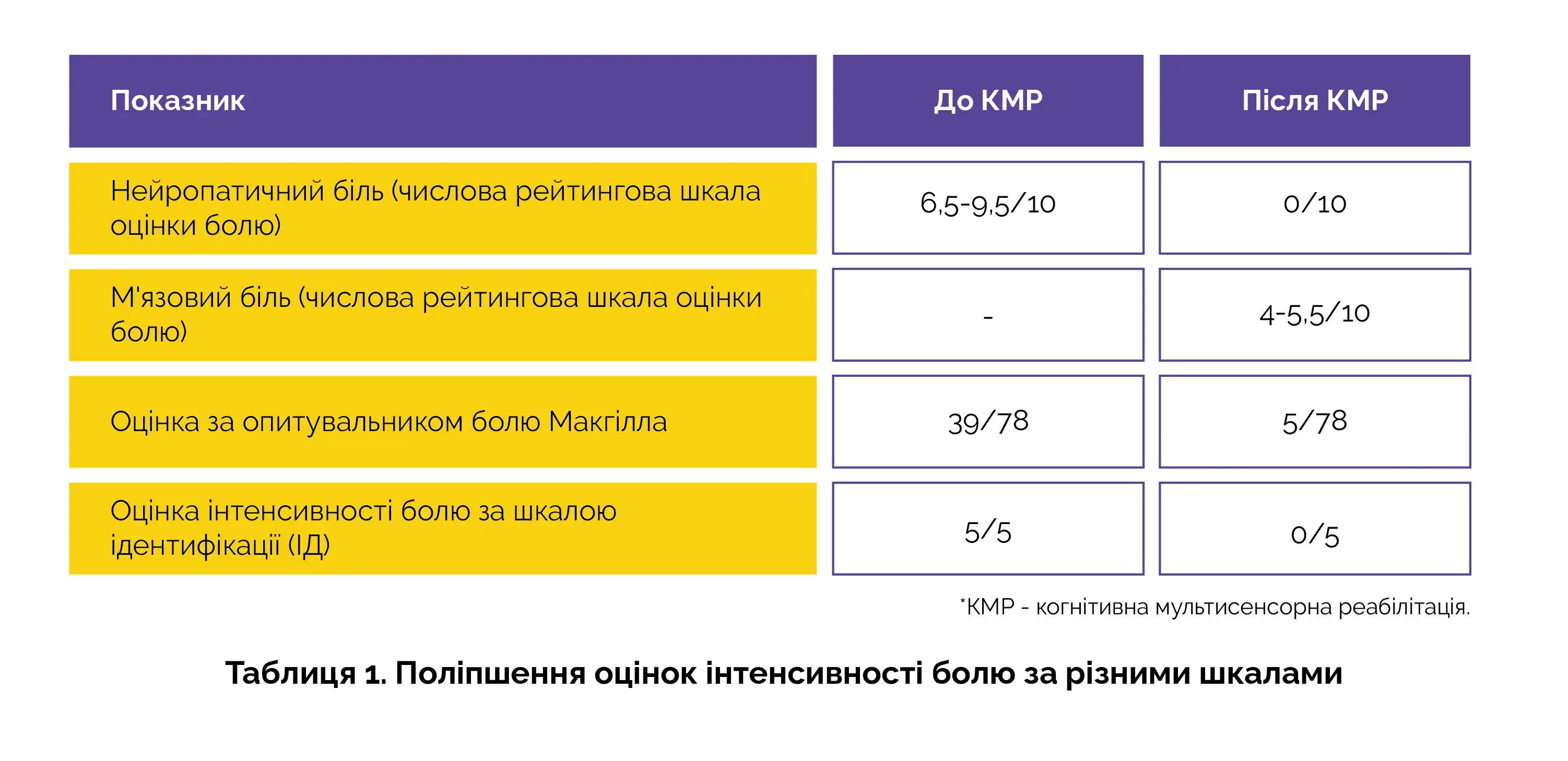Змінити пароль!
Скинути пароль!


Мета даного аналізу клінічного випадку полягала в оцінці ефективності когнітивної мультисенсорної реабілітації (КМР) у полегшенні тяжких фантомних болів після ампутації кінцівки (ФБАК) у пацієнтки, що не відповідає на медикаментозну терапію, епідуральну стимуляцію та дзеркальну терапію.
Когнітивна мультисенсорна реабілітація — новий метод лікування фантомного болю, який сприяє відновленню зорових та мультисенсорних уявлень руху як у здоровій, так і в ампутованій кінцівці, забезпечуючи полегшення болю та покращення рухливості.
Мета даного аналізу клінічного випадку полягала в оцінці ефективності когнітивної мультисенсорної реабілітації (КМР) у полегшенні тяжких фантомних болів після ампутації кінцівки (ФБАК) у пацієнтки, що не відповідає на медикаментозну терапію, епідуральну стимуляцію та дзеркальну терапію.
У жінки віком 26 років спостерігалися важкі ФБАК після ампутації проксимальної третини ноги. Ампутацію їй провели після кількох невдалих курсів лікування нейропатичного болю в лівій стопі, який зберігався протягом 6 років.
Незважаючи на прийом знеболювальних препаратів та дзеркальну терапію, фантомний біль не припинявся, через що їй було важко носити протез. У період з жовтня по грудень 2012 року пацієнтка пройшла 35 сеансів когнітивної мультисенсорної реабілітації (КМР), що включають вправи на мультисенсорну дискримінацію на неураженій стороні та вправи на мультисенсорне уявлення рухів про участь обох кінцівок для відновлення ментальних уявлень.
Поліпшення оцінок інтенсивності болю після застосування КМР описано у таблиці 1 нижче:

Після виписки залежність пацієнтки від знеболювальних препаратів знизилася як мінімум на 50%, а через 10 місяців спостереження у вересні 2013 року вона припинила прийом метадону чи фентанілу. В амбулаторних умовах вона продовжувала проходити КМР, освоївши користування протезом і поступово відмовившись від милиць до вересня 2013 року. Станом на березень 2024 року вона більше не залежить від анальгетиків і може самостійно ходити з протезом без допомоги допоміжних пристроїв. ФБАК у неї ефективно купіруються, і вона справляється з їх загостреннями за допомогою вправ КМР, які зазвичай полегшують біль протягом 10-15 хвилин.
КМР призводить до довгострокового зниження інтенсивності ФБАК протягом 12 років. Ефект може бути пов'язаний з відновленням точного мультисенсорного уявлення рухів, що охоплює як здорову, так і ампутовану кінцівку, зачіпаючи поточні та колишні дії.
Frontiers in Pain Research
Case Report: Phantom limb pain relief after cognitive multisensory rehabilitation
Marina Zerntiz та співавт.
Коментарі (0)